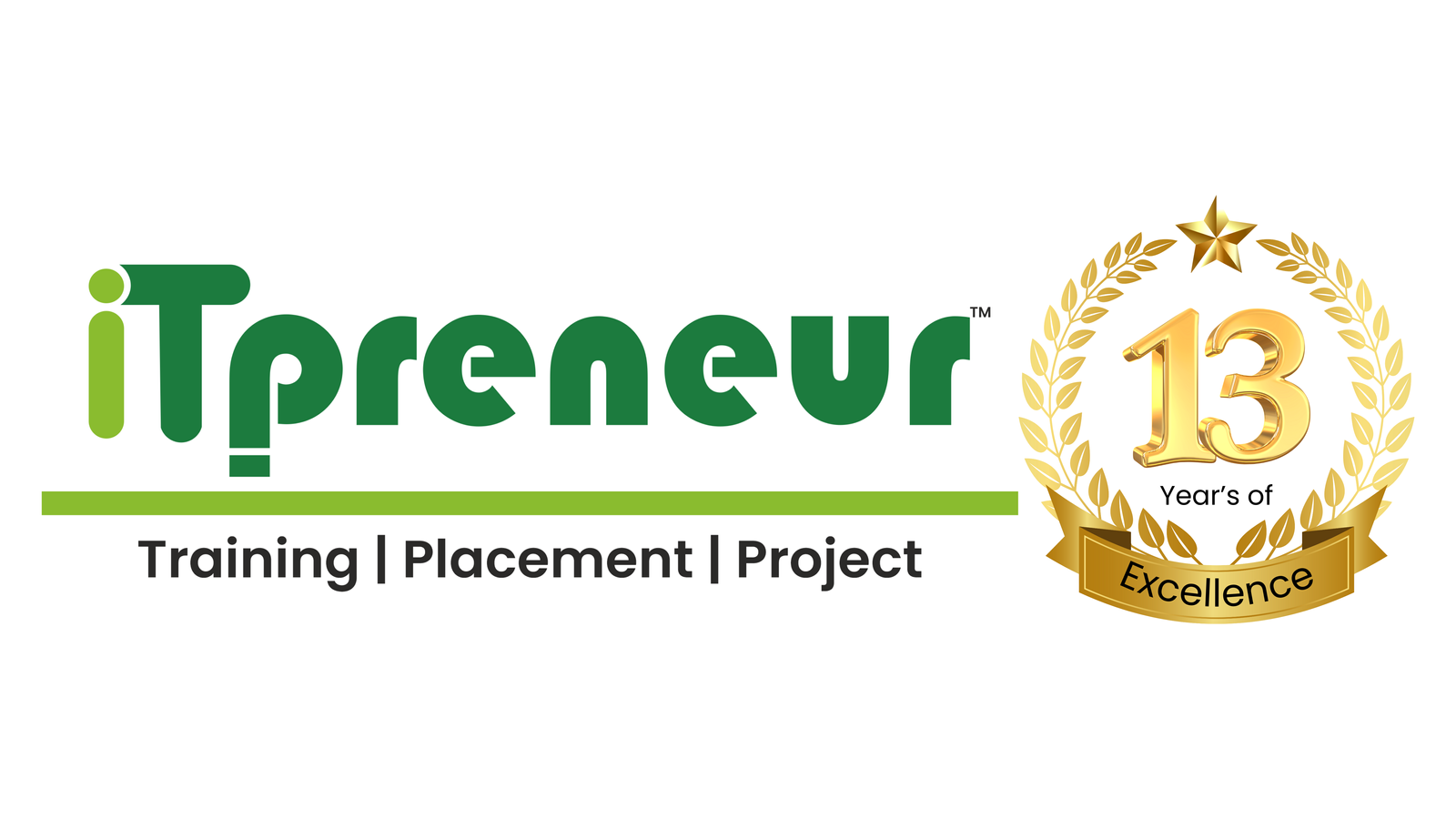Code, Cloud & Cyber: The 3C Formula for IT Mastery

Code, Cloud & Cyber: The 3C Formula for IT Mastery In today’s digital landscape, staying ahead in the IT industry requires a combination of essential technical skills. Whether you’re an aspiring developer, a cloud enthusiast, or a cybersecurity expert, mastering the 3C Formula – Code, Cloud, & Cyber – is the key to unlocking limitless opportunities in the world of technology. These three pillars form the foundation of modern IT infrastructure and innovation, making them critical for professionals who want to build a strong career. Let’s explore how Code, Cloud, and Cybersecurity are shaping the future of IT and why you should master them today. 1. Code: The Heart of Software Development Why is Coding Important? Code is the backbone of the digital world. Every website, mobile app, and software solution is powered by programming languages like Python, Java, JavaScript, C++, and .NET. As technology advances, businesses require skilled developers to build and maintain their applications efficiently. Key Benefits of Learning to Code: ✅ Develop Scalable Applications – Build powerful web, mobile, and enterprise applications.✅ Enhance Problem-Solving Skills – Coding improves logical thinking and analytical abilities.✅ Automate and Optimize Processes – Write scripts to automate repetitive tasks and increase efficiency.✅ High Demand for Developers – Full-stack, backend, and frontend developers are in huge demand across industries. How to Master Coding? With technology evolving rapidly, software development is one of the most promising career paths. 2. Cloud: The Future of IT Infrastructure Why is Cloud Computing Essential? The world is moving towards cloud-based solutions, making AWS, Microsoft Azure, and Google Cloud the most sought-after platforms. Companies prefer cloud computing for its scalability, cost-effectiveness, and security. Key Benefits of Cloud Computing: ✅ Cost Efficiency – Reduces infrastructure costs for businesses.✅ Scalability – Businesses can scale applications easily as they grow.✅ Remote Accessibility – Cloud services allow data and applications to be accessed anywhere.✅ Job Demand – Cloud computing professionals are in high demand worldwide. How to Master Cloud Computing? With businesses migrating to the cloud, professionals with cloud expertise will always stay ahead in the IT industry. 3. Cyber: Securing the Digital World Why is Cybersecurity Crucial? As technology grows, so do cyber threats. Cybersecurity professionals play a critical role in protecting sensitive information, securing networks, and preventing cyberattacks. Key Benefits of Cybersecurity: ✅ Prevent Data Breaches – Protect organizations from hacking attempts and cyber threats.✅ High-Paying Career – Cybersecurity professionals are among the highest-paid in IT.✅ Ever-Growing Demand – The need for cybersecurity experts is increasing daily.✅ Opportunities in Ethical Hacking – Companies require ethical hackers to identify vulnerabilities. How to Master Cybersecurity? With the increasing number of cyber threats, cybersecurity experts have one of the most in-demand and secure careers in IT. Why Should You Master the 3C Formula? 🚀 High Demand – IT companies are actively hiring professionals with expertise in Coding, Cloud Computing, and Cybersecurity.💰 Lucrative Salaries – These skills offer high-paying job opportunities with career growth.🌍 Global Reach – Businesses worldwide are embracing cloud-based and secure digital solutions.🎯 Future-Proof Career – With AI, blockchain, and IoT growing, these IT skills will always be relevant. By mastering the 3C Formula – Code, Cloud & Cyber, you’ll position yourself as a highly skilled IT professional ready to thrive in a competitive industry. Start Your IT Journey Today! At iTpreneur, we offer industry-focused training in Full Stack Development, Cloud Computing, and Cybersecurity, designed to help you gain hands-on experience and secure a high-paying job. Take the first step toward mastering the future of IT! 🚀
Code Like a Pro: Master Java, Python & Everything in Between

Introduction Coding is no longer just a skill—it’s a superpower! Whether you’re diving into Java, exploring Python, or juggling multiple languages, mastering programming can unlock limitless opportunities. In this blog, we’ll guide you on how to code like a pro, improve your efficiency, and level up your skills in Java, Python, and more! Why Java & Python? Java and Python are two of the most popular programming languages, each with unique strengths: Learning both gives you the flexibility to work on diverse projects and expand your career opportunities. Companies worldwide rely on these languages for robust and scalable applications, making them essential for every developer. Steps to Master Java, Python & More 1. Build Strong Fundamentals Mastering any programming language starts with understanding the basics. These include: A strong foundation will help you understand advanced topics more easily and write clean, efficient, and maintainable code. 2. Practice Through Projects The best way to learn programming is by building real-world applications. Some project ideas include: Java Projects Python Projects Working on projects helps solidify your learning and gives you a portfolio to showcase to potential employers. 3. Master Development Tools Professional developers use various tools to enhance their coding efficiency. Some essential tools include: Having expertise in these tools makes your development process faster and more professional. 4. Contribute to Open Source One of the best ways to grow as a developer is by contributing to open-source projects. Benefits include: To get started, visit platforms like GitHub, GitLab, and Bitbucket, explore repositories, and start contributing to projects that interest you. 5. Stay Updated & Keep Learning The tech industry evolves rapidly, and staying updated is crucial. Here’s how you can keep learning: Continuous learning is the key to staying ahead in the competitive field of programming. Beyond Java & Python: Expanding Your Skillset Once you’ve mastered Java and Python, consider expanding your expertise with additional technologies: The more skills you acquire, the more versatile you become in the tech industry. Best Practices to Code Like a Pro To truly code like a pro, follow these best practices: 1. Write Clean Code 2. Follow Design Patterns 3. Use Documentation & Comments Wisely 4. Test Your Code 5. Optimize for Performance By incorporating these best practices, you’ll write better, cleaner, and more efficient code. Conclusion Becoming a professional coder isn’t just about memorizing syntax—it’s about problem-solving, hands-on practice, and continuous learning. Whether you’re mastering Java, Python, or expanding your knowledge into other technologies, staying consistent and curious will set you apart. Key Takeaways: Now it’s your turn! What’s your favorite programming language, and how do you practice coding? Share your thoughts in the comments!
How to Build Your First Full Stack Web Application

Introduction Building a full stack web application can be an exciting journey, combining front-end and back-end technologies to create a fully functional product. Whether you are a beginner or an aspiring developer, this guide will walk you through the essential steps to build your first full stack web application. Step 1: Choose Your Tech Stack Before you start coding, selecting the right technologies for your application is crucial. Here’s a popular full stack choice: Front-End (Client-Side) Back-End (Server-Side) Database Version Control & Deployment Step 2: Set Up Your Development Environment Step 3: Create the Front-End Step 4: Build the Back-End Step 5: Connect the Database Step 6: Implement API Routes Create routes to handle CRUD (Create, Read, Update, Delete) operations: Step 7: Connect Front-End with Back-End Step 8: Deploy Your Application Conclusion Building a full stack web application involves integrating front-end, back-end, and database technologies. By following these steps, you’ll gain hands-on experience in designing, developing, and deploying a functional web app. Keep experimenting and refining your skills to become a proficient full stack developer! Are you ready to build your career in Full Stack Development? Join iTpreneur for expert training and 100% job placement assistance! 🚀 📞 Call us: 8237002020 | 8087423030🌐 Visit: www.itpreneurpune.com
The Future of Flutter: What to Expect in 2025 and Beyond

Flutter has been one of the most sought-after cross-platform frameworks to date, enabling developers to create high-performance apps for mobile, web, desktop, and even embedded platforms. As we enter 2025, things are looking up for Flutter, with some awesome developments in the pipeline. Let’s see what the future holds for Flutter and how it will transform the world of app development.
Why Every IT Professional Needs a LinkedIn Profile??

In today’s digital era, where networking and online presence are crucial, LinkedIn has become a game-changer for IT professionals. Whether you’re a software developer, cybersecurity expert, data analyst, or IT manager, having a strong LinkedIn profile is no longer optional – it’s a necessity. ConclusionIn today’s high-speed IT environment, a LinkedIn presence is not a nicety but a necessity—a critical career asset. Whether you’re looking to find a new job, expand your network, or become a thought leader in your field, LinkedIn can assist you in reaching your career objectives.
Hack Your Future: Unlock IT Success with the Right Skills

In today’s fast-paced digital era, the IT industry is evolving at an unprecedented rate. Success in this dynamic field is no longer solely dependent on having a degree—it requires mastering the right skills, staying ahead of technological advancements, and adapting to industry demands. If you aspire to build a successful career in IT, now is the time to equip yourself with the essential skills that truly matter. 1. Understanding the IT Landscape: The Need for Adaptability The IT sector is a constantly shifting ecosystem where new technologies emerge, and old ones become obsolete. Whether you are an aspiring developer, cybersecurity expert, or cloud architect, the ability to adapt and continuously learn is your greatest asset. Key Insight: IT professionals who embrace change and proactively upskill themselves have a significant edge over those who rely solely on traditional education. 2. Mastering Core Technical Skills: The Building Blocks of IT Success To thrive in IT, proficiency in fundamental technical skills is essential. The core competencies that can set you apart include: 3. Soft Skills: The Unsung Heroes of IT Success While technical expertise is crucial, it is soft skills that differentiate a good IT professional from a great one. Companies seek individuals who can: 4. Certifications and Continuous Learning: Staying Ahead of the Curve In the IT industry, learning never stops. Certifications provide a competitive advantage and validate expertise. Some of the most recognized IT certifications include: Beyond certifications, staying updated through technology blogs, online courses, workshops, and industry conferences ensures long-term relevance in this competitive industry. 5. Real-World Experience: Bridging the Gap Between Theory and Practice A common mistake aspiring IT professionals make is focusing solely on theoretical knowledge without applying it in real-world scenarios. Practical experience is key, and it can be gained through: 6. Networking: The Shortcut to Career Growth In the IT industry, opportunities often come through referrals and professional connections. Expanding one’s network is crucial for career advancement. Key strategies include: 7. Embracing Innovation: The Future of IT Careers With emerging technologies such as blockchain, quantum computing, the Internet of Things (IoT), and edge computing transforming the industry, those who stay curious and embrace innovation will be the ones leading the future. IT success is no longer just about coding—it is about problem-solving, adapting, and leveraging technology to create a lasting impact. Conclusion: Take Charge of Your IT Future Success in IT is not just about securing a job—it is about crafting a career path that aligns with one’s strengths and aspirations. The key to unlocking IT success lies in: The future belongs to those who are proactive, skilled, and ready to innovate. Now is the time to take charge, enhance your expertise, and unlock your IT success. The opportunities are endless—seize them with confidence and determination.
IT Job Market Trends: What Recruiters Are Looking for in 2024

IT Job Market Trends: What Recruiters Are Looking for in 2024 IT Job Market Trends: What Recruiters Are Looking for in 2025 The IT job market is evolving rapidly, and as we enter 2025, recruiters are on the lookout for professionals who can adapt to technological advancements, industry shifts, and new skill demands. Whether you are a fresher or an experienced professional, staying ahead of these trends will give you a competitive edge in securing high-paying jobs in the IT sector. 1. High Demand for AI & Machine Learning Professionals Artificial Intelligence (AI) and Machine Learning (ML) continue to dominate the IT landscape. Companies are increasingly leveraging AI for automation, data analysis, and customer experience enhancement. Recruiters are actively seeking candidates with expertise in: 2. Cybersecurity: A Top Priority With the rise of cyber threats, organizations are investing heavily in cybersecurity. Skilled cybersecurity professionals are in high demand to protect sensitive data and prevent breaches. Key skills that recruiters seek include: 3. Cloud Computing and DevOps Expertise As businesses continue shifting towards cloud-based infrastructures, recruiters are on the lookout for cloud specialists and DevOps engineers. Desired skills include: 4. Full-Stack Development Continues to Thrive The demand for full-stack developers remains strong, as companies look for professionals who can handle both front-end and back-end development. The key technologies in demand include: 5. Data Science & Analytics: The Power of Decision-Making Companies rely on data-driven insights to make strategic business decisions, increasing the demand for data scientists and analysts. Recruiters prioritize candidates with expertise in: 6. The Rise of Blockchain & Web3 Technologies Blockchain is expanding beyond cryptocurrency, with industries using it for smart contracts, secure transactions, and decentralized applications. Recruiters are looking for: 7. Soft Skills Are More Important Than Ever Apart from technical expertise, recruiters in 2025 are emphasizing soft skills such as: How to Stay Ahead in the 2025 IT Job Market Conclusion The IT job market in 2025 will be driven by advanced technologies, security concerns, and data-driven decision-making. To stay competitive, job seekers must focus on acquiring in-demand technical skills while also improving their soft skills. Whether you’re an aspiring developer, a data scientist, or a cybersecurity expert, staying ahead of these trends will position you for success in the evolving IT industry. Are you looking to upskill and land your dream IT job? Explore our latest IT training programs with 100% job guarantee at iTpreneur! 🚀
How Low-Code & No-Code Platforms Are Changing Software Development

The landscape of software development is changing dramatically. Coding is no longer the sole route to building useful, contemporary apps. No-code and low-code platforms are transforming application development for businesses and developers, enabling faster, more accessible, and collaborative development. What are Low-Code and No-Code Platforms?At their essence, low-code and no-code platforms both seek to make the app development process easier: •Low-Code Platforms: These platforms provide a visual development environment with pre-designed templates, drag-and-drop elements, and automated processes. While they involve some coding for customizations, they minimize the level of hand-coding. •No-Code Platforms: These platforms are meant for users with no or minimal programming knowledge. They offer a purely graphical interface. Users can develop applications by arranging and configuring existing components, without ever writing code. By abstracting away much of the underlying complexity, these platforms enable not just professional developers but also “citizen developers” who know their business requirements and can build solutions accordingly. How These Platforms Are Changing Software Development Accelerating the Development Process One of the most significant benefits of low-code and no-code platforms is the drastic reduction in development time: Democratizing App Development These platforms break down traditional barriers to software creation: Enhancing Developer Productivity For professional developers, low-code platforms are not a threat but rather a valuable complement: Benefits for Businesses The shift towards low-code and no-code development brings numerous advantages: Challenges and Considerations Despite their many benefits, low-code and no-code platforms are not without their challenges: The Future of Software Development The evolution of low-code and no-code platforms is just beginning. Here’s what the future might hold: Conclusion Low-code and no-code platforms are not just a fleeting trend; they represent a fundamental shift in how software is developed. By dramatically reducing the complexity and cost of building applications, these platforms are democratizing innovation and fostering a more agile, collaborative, and efficient development environment. While challenges such as security, scalability, and integration remain, the overall benefits are driving businesses to explore and adopt these tools as part of their long-term digital strategy.
The Significance of Cybersecurity in the Age of AI and Cloud

With the current digital age, Artificial Intelligence (AI) and cloud computing have transformed the way companies do business, store information, and automate operations. Although these technologies have huge advantages, they also create new security risks. AI is being used by cybercriminals to attack businesses in advanced ways, while cloud-based environments create special security issues. Recognizing the role of cybersecurity in this era is important for safeguarding confidential information and maintaining business continuity. The Emergence of AI in CybersecurityAI is a two-faced sword when it comes to cyber security. On one hand, AI-driven security tools have the ability to identify anomalies, recognize threats in real-time, and provide automated responses to cyber attacks. Machine learning algorithms continuously scan patterns so that businesses remain ahead of changing threats. But AI also enables cybercriminals. Hackers utilize AI to make attacks autonomous, evade conventional security controls, and develop exceedingly sophisticated phishing scams. AI-created malware, deepfakes, and automated hacking tools are increasingly on the rise, making cybersecurity more demanding than it has ever been. Cloud Computing and Security Issues Cloud computing has revolutionized data storage and access, enabling companies to scale operations effectively. Cloud environments are also the first choice for cyberattacks, though. Some of the most important security issues related to cloud computing are: Data Breaches: Unauthorised access to data stored in the cloud can result in sensitive data being leaked. Misconfigurations: Misconfigured cloud settings can provide vulnerabilities that are exploited by hackers.Insider Threats: Cloud system access by employees or third-party vendors can be a security threat. Lack of Visibility: It is difficult for organizations to monitor and control data movement in multi-cloud environments. Best Cybersecurity Practices for the AI and Cloud Age To counter the risks of cybersecurity, organizations should take a security-first approach. Some of the key best practices are:Adopt Multi-Factor Authentication (MFA): Providing an added layer of protection ensures that even if credentials get stolen, malicious access is stopped.Employ AI-Powered Security Solutions: Use AI-powered threat detection tools to scan and counter cyber threats in real-time. Encrypt Data: Encrypting data in transit as well as data at rest improves security against breach. Regular Security Audits: Perform regular security audits to discover and fix vulnerabilities. Employee Training and Awareness: Train employees about cybersecurity best practices to avoid social engineering attacks. Zero Trust Architecture: Use a zero-trust model where no user or device is trusted automatically, but must be verified continually. Data Privacy Challenges in Cloud and AI Systems As more companies depend on cloud computing and AI technologies, data privacy is now a prime issue. Cloud platforms hold extensive amounts of confidential data, hence becoming prime targets for cyberattackers. On the other hand, AI systems process and examine large sets of data, at times gathering information about individuals, which, when not secured effectively, can cause breaches or be misused. One of the greatest challenges is how to comply with international data protection laws such as GDPR and India’s DPDP Act while utilizing the potential of AI. Further, AI models themselves are susceptible to data poisoning attacks, where bad data is fed in to bias results. Organizations need to have strong encryption, access controls, and open data policies to safeguard user privacy in this fast-changing digital world. The Increasing Need for Cybersecurity Professionals: A Career Guide With the increasing incidence of cyber attacks, data breaches, and ransomware attacks, the need for cybersecurity professionals has never been greater. With growing dependence on digital infrastructure by businesses and governments alike, safeguarding sensitive information is a priority like no other. Organizations in every industry, ranging from finance to healthcare, are looking for trained cybersecurity professionals to secure their systems. Professions such as ethical hackers, security analysts, and cloud security experts are in great demand, with high-paying salaries and job security. To pursue this profession, future professionals need to emphasize acquiring certifications such as CEH, CISSP, or CompTIA Security+, and practical experience in threat detection and network security. As AI-powered attacks become more advanced, cybersecurity is one of the most essential and future-proof IT professions. How AI and Cloud Computing Are Transforming Cybersecurity AI and cloud computing are transforming cybersecurity by advancing threat detection, automating responses to security, and enhancing protection of data. AI-powered security systems are capable of processing massive amounts of data in real-time, detecting likely threats before they become attacks. Machine learning-based algorithms assist in detecting anomalies, forecasting cyber risks, and responding automatically to block damage. At the same time, cloud computing provides elastic security solutions like cloud firewalls and encryption that allow organizations to safeguard their data anywhere. Nonetheless, these advances come with added challenges like AI-driven cyber threats and cloud weaknesses. To be ahead of the game, organizations need to incorporate AI-powered security tools, exercise robust cloud security measures, and regularly update defenses against emerging cyber threats. ConclusionWith the evolution of AI and cloud computing, cybersecurity should remain at the top of the list for organizations and individuals. Though these technologies open up new possibilities and improve efficiency, they pose sophisticated security challenges as well. With the implementation of strong cybersecurity practices, use of AI-based security solutions, and knowledge about emerging threats, organizations can secure their digital resources and have trust in a highly connected world. Cybersecurity is not merely a technical necessity but a business imperative. Spending money on good security habits now will save money and prevent expensive breaches and losses of data down the road.
How to Build a Portfolio as a Full Stack Developer

How to Build a Portfolio as a Full Stack Developer In today’s competitive job market, having a strong portfolio is essential for Full Stack Developers. A well-crafted portfolio showcases your technical expertise, coding skills, and problem-solving abilities to potential employers. Whether you’re a fresher or an experienced developer, your portfolio can make a lasting impression and increase your chances of landing your dream job. Here’s a step-by-step guide on how to build a compelling Full Stack Developer portfolio. 1. Choose the Right Projects Your portfolio should highlight a variety of projects that demonstrate your skills in frontend, backend, and database management. Consider including: 2. Use Modern Tech Stacks To stand out, use popular frameworks and tools that are in demand: 3. Structure Your Portfolio Properly Your portfolio website should be well-organized and include: 4. Write Case Studies for Your Projects Instead of just listing projects, explain your thought process and how you built them: 5. Host Your Projects Online Deploy your projects to live servers so potential employers can see them in action. Use: 6. Optimize for SEO & Performance Ensure your portfolio site loads quickly and is optimized for search engines. Use: 7. Showcase Your GitHub Contributions Employers often check GitHub profiles to assess coding style and contribution. Make sure your profile has: 8. Include Testimonials & Certifications Adding client testimonials, project reviews, or certifications from platforms like Coursera, Udemy, or iTpreneur can add credibility to your portfolio. 9. Keep Updating & Improving Your portfolio is a living document. Keep updating it with new projects, skills, and achievements. Stay updated with industry trends and continuously improve your work. Conclusion A strong portfolio is a game-changer in the Full Stack Development industry. It not only showcases your technical skills but also reflects your problem-solving abilities, creativity, and dedication. Start building today and stand out in the tech job market! 🚀 Want to become a Full Stack Developer? Join iTpreneur’s Full Stack Development Course and get hands-on training with real-world projects!How to Build a Portfolio as a Full Stack Developer In today’s competitive job market, having a strong portfolio is essential for Full Stack Developers. A well-crafted portfolio showcases your technical expertise, coding skills, and problem-solving abilities to potential employers. Whether you’re a fresher or an experienced developer, your portfolio can make a lasting impression and increase your chances of landing your dream job. Here’s a step-by-step guide on how to build a compelling Full Stack Developer portfolio. 1. Choose the Right Projects Your portfolio should highlight a variety of projects that demonstrate your skills in frontend, backend, and database management. Consider including: 2. Use Modern Tech Stacks To stand out, use popular frameworks and tools that are in demand: 3. Structure Your Portfolio Properly Your portfolio website should be well-organized and include: 4. Write Case Studies for Your Projects Instead of just listing projects, explain your thought process and how you built them: 5. Host Your Projects Online Deploy your projects to live servers so potential employers can see them in action. Use: 6. Optimize for SEO & Performance Ensure your portfolio site loads quickly and is optimized for search engines. Use: 7. Showcase Your GitHub Contributions Employers often check GitHub profiles to assess coding style and contribution. Make sure your profile has: 8. Include Testimonials & Certifications Adding client testimonials, project reviews, or certifications from platforms like Coursera, Udemy, or iTpreneur can add credibility to your portfolio. 9. Keep Updating & Improving Your portfolio is a living document. Keep updating it with new projects, skills, and achievements. Stay updated with industry trends and continuously improve your work. Conclusion A strong portfolio is a game-changer in the Full Stack Development industry. It not only showcases your technical skills but also reflects your problem-solving abilities, creativity, and dedication. Start building today and stand out in the tech job market! 🚀 Want to become a Full Stack Developer? Join iTpreneur’s Full Stack Development Course and get hands-on training with real-world projects!
